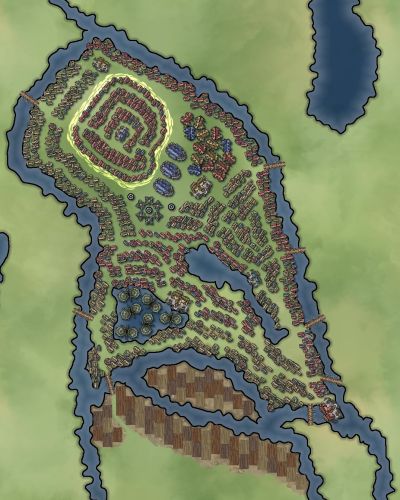Atchafalaya
Demographics
Technically, most of the people in Atchafalaya are of the Paha people, specifically the Reclaimers, but few members of the city would consider themselves to be lead by Toosa in practice. Instead, most of the people in this fairly independent city state define themselves by being residents of the city, and further by which of the six Houses (semi-political families) they belong to. The houses are House Egret, House Crawfish, House Turkey, House Racoon, House Armadillo, and House Gator. Each House makes up approximately one-sixth of the population of the cit, give or take a few.
Age wise, the city is fairly demographically stable. There are slightly more middle-aged residents than elders, and slightly more youths than middle-aged residents, indicating a slow but steady growth in the population that has continued for the past century or so. There is a small subset of the population, about 5-7%, that immigrated from other cities in the Free Lands, and a similar amount of people born in the city that left permanently over the same time period.
Government
Industry & Trade
Infrastructure
- 7 major bridges across the Mizizipi
- Floating Orchard - large floating peat boxes with trees, vines, and shrubs that float on the Nooru Lake in the south-west of the city
- Atoll Fields - Climate, humidity, and temperature managed fields for growing things not suited to the bayou climate
- Bayou Fields - standard crop areas for day-to-day and catastrophe crops
Districts
History
Initially, Atchafalaya was a healer outpost along the Mizizipi trading routes. The healing family that lived there often took the Path of the Gator at maturity, and quickly became known as the House of Gator.
After a decade or so, a couple more families settled in Atchafalaya. The first, a fishing and gathering family that took the name House Egret, forsook the wide ranging travels along the southern coast in favor of the crawfish and shrimp rich waters of the Bayou. Following in their wake, a family of materials scientists who used the discarded shells of crawfish to build lightweight gats and bots settled in the basin as well, and called themselves House Crawfish.
With three families living in close proximity, tensions quickly rose. Most issues were dealt with fairly easily in discussions between the elders of the families, but as the families grew, it became harder and harder for the elders to manage their own family affairs and the growing inter-family dynamics. By the time House Racoon (a family of boat builders-turned-architects) and House Armadillo (a family of warriors and anthropologists) settled in Atchafalaya, things were spiraling out of control. So the five families got together and formed the Council of Heirs. Each family would nominate a single Elder to lead the affairs of that family, and manage things within their House. And each Elder would pick an Heir, the person who would become Elder when they died. The Heirs would be in charge of cross-House collaborations, so the Elders could focus on the important things within their House.
This worked smoothly as the decades passed, and the Houses were even able to integrate another family that settled in the city - House Turkey, bringing farming and terraforming knowledge from the far north. But interpersonal politics were not the only thing that threatened the peace of the growing city of Atchafalaya. As the centuries passed, the world began warming, and the sea crept northwards. What once was a comfortably inland city situated on a swampy part of the Mizizipi became much closer to the coast. An the Southern Storms crept north too, and their heavy winds and rains began threatening the city for the first time, causing deep floods and rising tides.


